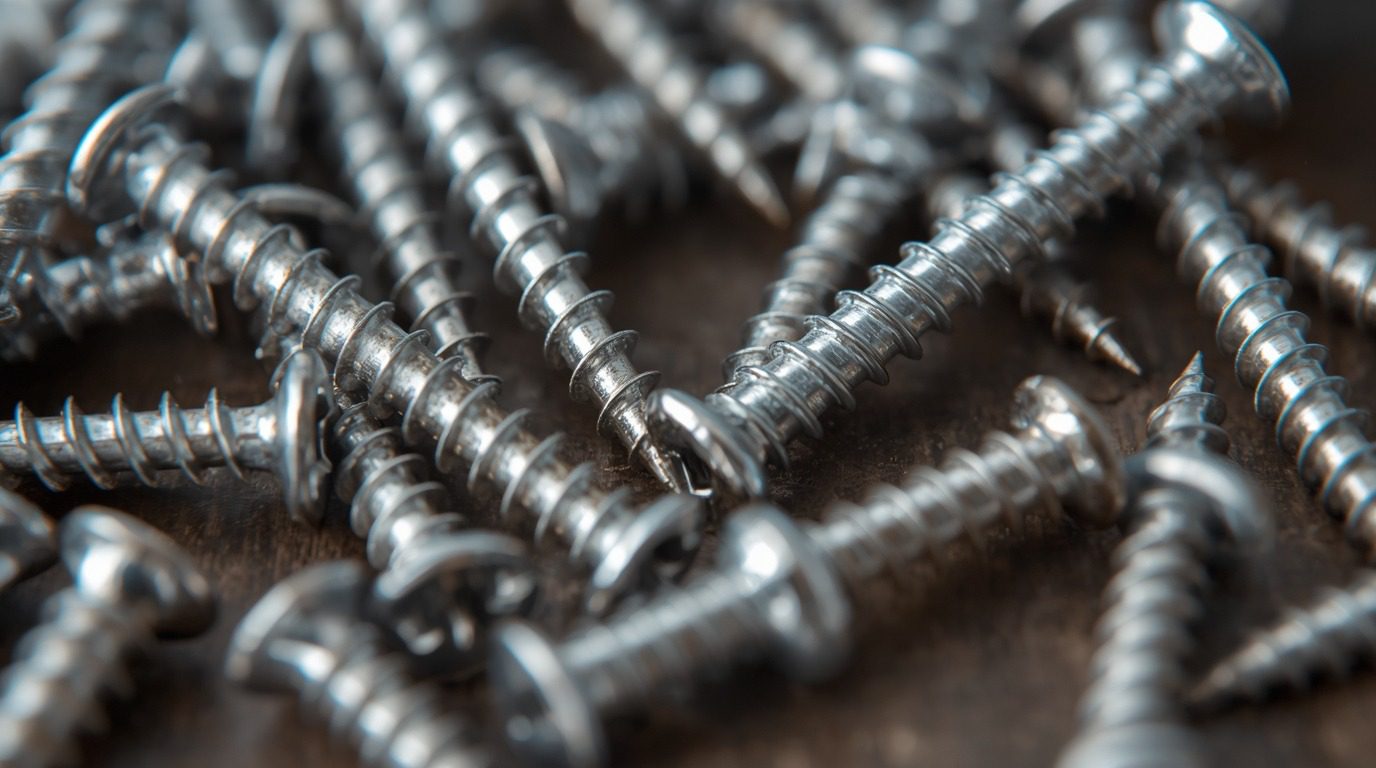You know that satisfying moment when a wooden chair holds firm, no matter how much it is used? That comes from smart joint work. Not just fancy glue or perfect cuts, but wood screws doing the heavy lifting behind the scenes. They might seem small, but they add strength in the exact spot where it matters.
Let us talk about how something so simple keeps your furniture solid and standing for years.

What Do Wood Screws Actually Do?
Wood screws do more than just hold things together. They grip. They pull. They lock pieces in with serious force.

Ever noticed how nails can slip out over time? Screws do not do that, especially if you choose the right kind. They dig into wood fibres and stay put. You will get a joint that feels tight and secure.
And yes, screws also make repairs easy. Unscrew, fix, reassemble. Try doing that with glue.
Why Do Strong Joints Rely on Screws?

It is simple. A wood screw acts like a clamp, one that never allows the joint to go off.
When you drive a screw in, it pulls both wooden parts tightly together. That tight bond is what gives your table leg or shelf the strength to hold weight or resist wobbles.
People often overlook this part while focusing on design. But strong joints? They depend on these little tools.
How Can You Pick the Right One?

You do not need a box full of fancy options. You just need the right size, the right length, and a sharp thread.
Stainless steel screws are a solid pick. They fight rust. For hardwoods, use a pilot hole. It prevents splitting and helps the screw settle neatly.
Go for flat-head screws if you want clean finishes.
The Anatomy of a Wood Screw (Quick Tour)
- Head – where your driver bit sits. Flat head sits flush; pan and round heads sit proud; trim heads are small for a lighter look.
- Drive type – Phillips, Pozi, square (Robertson), Torx/star. Torx and square give better grip and fewer stripped heads.
- Shank – the smooth section under the head (not all screws have one); helps draw pieces tight.
- Threads – coarse for softwood; fine for hardwood. Deep threads bite hard and resist pull-out.
- Tip – sharp or self-drilling. Sharp tips start fast; self-drillers save time in softwood and sheet goods.
Choosing Length and Gauge
A good rule: aim for screw length = 2 to 2.5× the thickness of the top piece you’re fastening. The point should enter the second piece well without bursting out the far side.
| Top piece thickness | Typical screw length |
|---|---|
| 1/2 in. (12–13 mm) | 1–1¼ in. |
| 3/4 in. (18–19 mm) | 1½–2 in. |
| 1 in. (25 mm) | 2–2½ in. |
Gauge (thickness) rises with size. #6 and #8 are common for casework; #10 for legs, stretchers, and heavier parts.
Pilot Holes Made Simple
Pilot holes stop splitting, guide the screw straight, and make driving smoother—vital in hardwoods like oak, maple, and walnut.
| Screw gauge | Softwood pilot (approx.) | Hardwood pilot (approx.) |
|---|---|---|
| #6 | 1/16 in. | 5/64 in. |
| #8 | 5/64 in. | 3/32 in. |
| #10 | 3/32 in. | 7/64 in. |
Tip: drill a clearance hole (same size as the screw’s shank) in the top piece only. That lets the screw pull the parts tight, like a clamp.
Wrapping It Up
Good furniture lasts because someone cared about the details. Screws are those details. Pick them well. Place them properly. That is the secret behind every sturdy piece.
FAQs
Do I always need a pilot hole?
No—but it’s smart in hardwoods and near edges. In soft pine you can often drive without a pilot, but a small pilot still gives cleaner results.
What if I can’t hide the head?
Use a low-profile trim head or a decorative washer. On rustic pieces, a visible pan head can look intentional.
Can I rely on screws without glue?
For light duty, yes. For furniture that sees stress—chairs, beds, dining tables—use both. Screws hold tight while glue spreads the load.
How many screws should I use?
Enough to spread the force. For a 24″ rail, two screws near each end plus one in the middle is common. Keep clear of end grain and leave edge distance.

